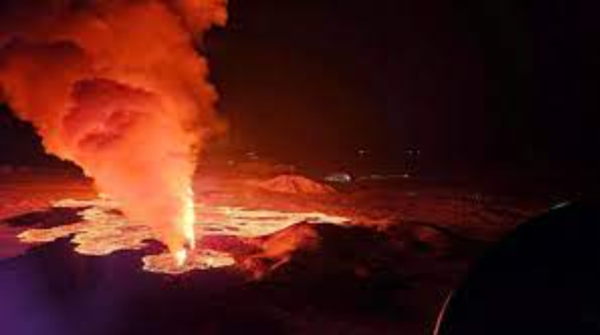Since December of 2023, the Reykjanes Peninsula has been facing tremendous devastation as the peninsula has had three eruptions up until February of 2024. The most recent volcano eruption has resulted in major damage to the Icelandic infrastructure, including hot water pipes, prompting the declaration of a state of emergency in Iceland. If the lava flow does not stop fast enough, there are worries regarding the possible effects on other vital pipes close to the Svartsengi power stations, as its damage may have a significant effect on Iceland’s infrastructure. This most recent eruption is sending lava streams up to three kilometers in length, making local schools in the districts closed until further notice and causing the closure of the famous Blue Lagoon.
The most recent volcanic eruption began on February 8, 2024, beginning with an earthquake northeast of Mount Slingarfell on Thursday morning. Thirty minutes later, it was reported that a volcanic eruption began in the region. An unstable crack in the rock, extended to the north and south for about two miles, caused “volcanic rock fragments… ejected into the air, known as tephra… [which] can affect human activities hundreds of miles downwind, reducing visibility on roads and for aircraft, and even short-circuiting electric transformers and power lines” (Washington Post). This volcanic eruption has raised questions about concerns over people in the impacted areas of the volcanic activity’s basic needs due to the damage to the hot water pipes. State and local authorities have advised the nearby residents to use less hot water and electricity because repairs can take several days. Additional effects on the community have come from the closing of schools in the districts where access to hot water has been disrupted. The schools will remain closed until further notice.
Well-known tourist sites like the Blue Lagoon have also been closed due to the eruption, causing a decrease in tourism in the area.
As of Thursday afternoon, the eruption seemed to be weakening. David Pyle, a volcanologist at the University of Oxford, noted that this most recent eruption bears a striking resemblance to the events that occurred in December of 2023 and January of this year when a big crack gave rise to a huge magma flood. The geography of Iceland is changing, and the need for adaptability in the face of these natural disasters is urgent, as shown by the recent volcanic activity. Volcanologists are keeping a close watch on the volcanic activity in Iceland with Dr. Eugenia Ilyinskaya of Leeds University observing that the eruption’s strength seems to be weakening. However, stating that the long-term effects of the eruption on the area are still unknown until further observations.
After observing a buildup of magma beneath the earth over the previous three weeks before the most recent eruption on February 8, the Icelandic Met Office has already issued warnings of an eruption. Before the most recent volcanic eruption, there had been hundreds of little earthquakes in the vicinity. A video, captured by the Icelandic coast guard showed “…fountains of lava soaring more than 50 meters (165 feet) into the darkened skies. A plume of vapor rose about 3 kilometers (1½ miles) above the volcano” (AP News). This was coupled with “about 15 million cubic meters of molten rock had flowed from the ground in the first seven hours of the eruption” (Reuters).
With the aftermath of multiple volcanic eruptions Iceland has faced, the nation is still standing strong. State and local authorities are emphasizing the need for a united front and continued vigilance. Scientists are continuing to monitor the situation, stressing the importance of the Icelanders to prepare in case of further volcanic eruptions.

